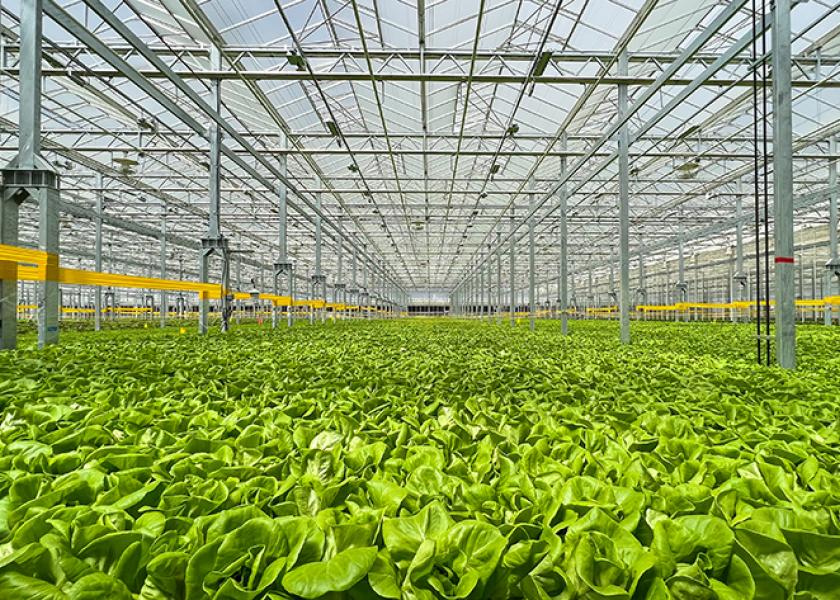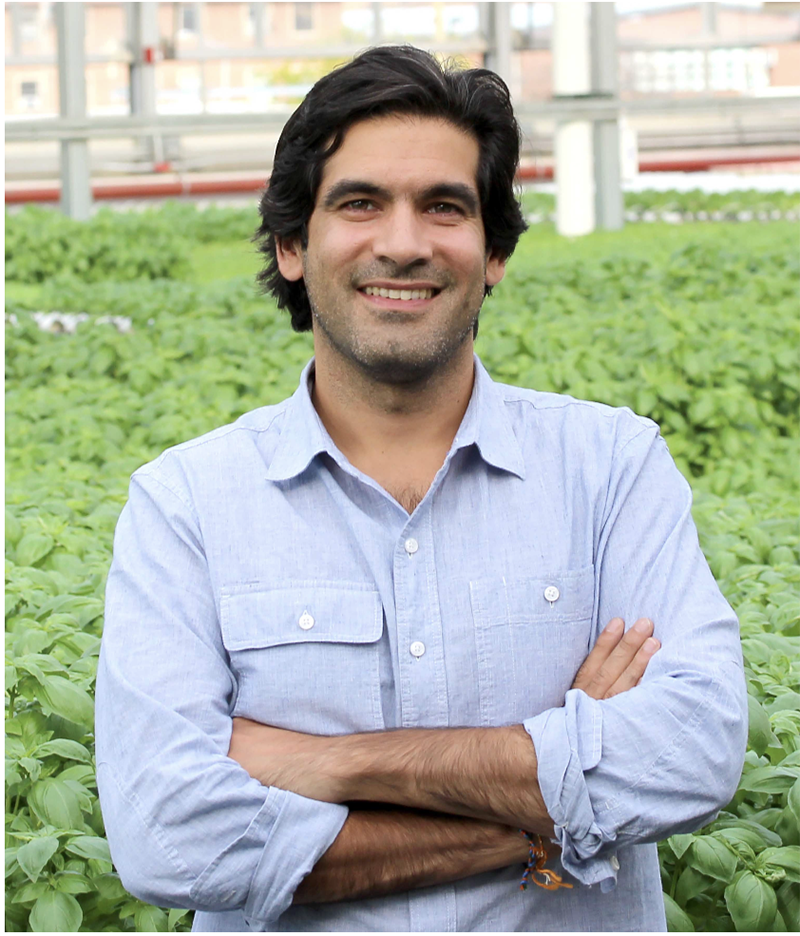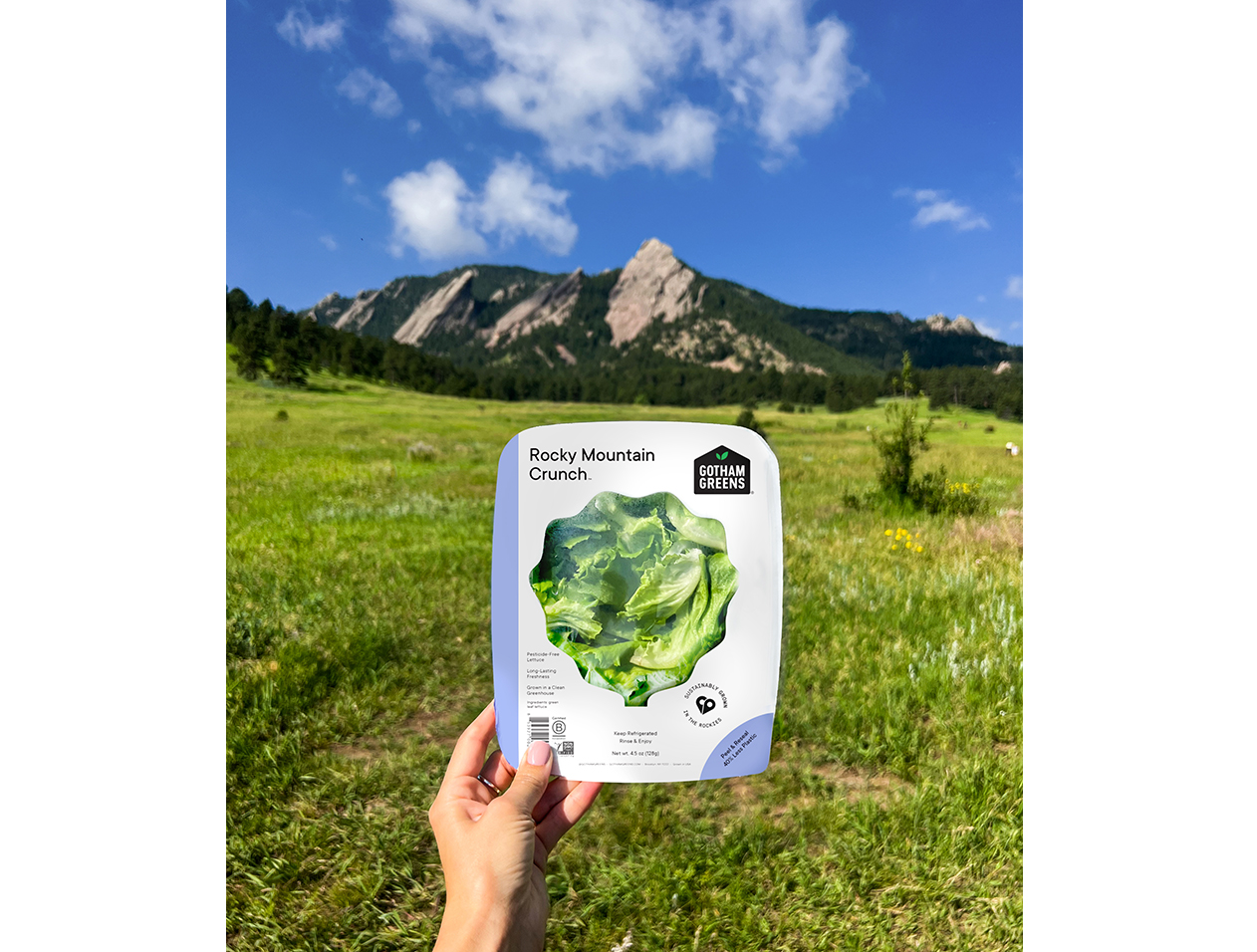‘CEA is here to stay,’ says Gotham Greens CEO

While some high-profile players in controlled environment agriculture have suffered setbacks and closures in recent months, Gotham Greens has continued to expand its indoor farming operations. Last month, the Brooklyn, N.Y.-based company opened a 140,000-square-foot facility in Windsor, Colo., its first of three new greenhouse facilities set to open in 2023 and the company’s 11th greenhouse nationwide.
The high-tech hydroponic Windsor greenhouse is Gotham Greens' second facility in Colorado. Its flagship Denver metro greenhouse located at Stanley Marketplace in Aurora, Colo., opened in 2020. The company’s newest facility in the state is nearly five times larger.
Gotham Greens' Colorado expansion won the attention of Gov. Jared Polis.
“Water is life in Colorado and throughout the Western United States. Unfortunately, without new technologies like Gotham Greens is deploying, Colorado won’t have enough water to sustain the next generation of agriculture jobs or the industry that is a crucial part of the state’s economy," Polis said in a news release announcing the facility’s official opening. “Gotham Greens is an innovative leader in a new era of agriculture that is working to ensure a more sustainable future for Coloradans. With this second greenhouse in the Rocky Mountain Region, the company is making it possible for more Coloradans to eat healthy, fresh, locally grown food, while also conserving the precious resources we need to protect the home we love.”
While Gotham Greens co-founder and Chief Financial Officer Eric Haley was based in New York when the CEA company was born, the Colorado native has since returned to his home state, where he too sees opportunity for growth.
“As a native Coloradan, this new greenhouse represents a significant milestone in our company’s national expansion and for the agricultural future of the state,” Haley said. “Natural resource conservation is essential to ensure that the Colorado I call home remains both beautiful and fertile for generations to come. Using proven indoor farming technology, we’re able to transform land that otherwise would be unusable for agricultural purposes into a high-tech, state-of-the-art greenhouse that produces approximately 30 times more leafy greens per acre of land than conventional open-field farming.”
To learn more about the company’s expansion plans and commitment to conserving natural resources while growing high-quality greens indoors, The Packer recently connected with co-founder and CEO Viraj Puri over Zoom.
Editor’s note: The following has been edited for length and clarity.

The Packer: As a Denver resident, I don't live far from the Gotham Greens at Stanley Marketplace [a collection of more than 50 independently owned Colorado businesses that offer a space to eat, drink, shop, exercise and more]. How does the new Windsor facility compare to your flagship Colorado location?
Puri: The first one in Stanley Marketplace is much smaller. It's about 30,000 square feet. But we really liked the idea of building a facility there because it was so public-facing and we felt like it was a great opportunity to showcase that project to the general public, especially since there hadn't been a lot of indoor farming operations in the Denver metro area prior to our entry. So rather than build it in a really remote part of the state, we thought it would make a lot of sense for it to be in a high-profile location.
Success in the market has been great since we opened that facility in 2020, and we realized that we needed more production capacity. We wanted to build a much larger facility, but it was difficult to find a large enough site in the Aurora area, so we started looking a little bit further north of the city and ended up in Windsor [about 60 miles north of Stanley Marketplace], and we're very pleased to be there.
How will the larger Colorado facility enable you to expand your reach with consumers and retailers?
It's a lot more production capacity — five times the amount of production capacity — so we're able to produce more items and deliver to more stores. Our products are located in all the Whole Foods Markets, as well as King Soopers (a Kroger Co. banner) and Sprouts Farmers Market stores in the region, along with some independent retailers such as Leevers Locavore, Ideal Market (part of Whole Foods Market), Choice Market, Tony's Market and others.
Gotham Greens had a lot of product distribution in these retailers out of our first facility at the Stanley Marketplace, but it was maybe a limited number of stores and limited number of items. So, in this way we've really been able to expand the number of items and the number of actual store locations.

Why Colorado?
Colorado — while geographically as the crow flies is not that far from say, California or Arizona, where much of the leafy greens come from — given the topography, the elevation and the mountains, it's not the easiest trip, and it still can take several days to get lettuce from California and Arizona into the Colorado market. If there's adverse weather conditions, it could take even longer. By growing locally in Colorado, we think we can provide a much more reliable and consistent supply of these products into the Colorado market.
Colorado and the Mountain region are also growing in terms of population. Denver is one of the fastest growing cities in the country. It's going through a lot of population growth and so are other parts of the Mountain region. We think our growth in the region mirrors what's happening from a population standpoint as well.
Given climate change, ongoing drought conditions and other challenges to outdoor farming, what are some of the environmental benefits of Gotham Greens’ operations?
Since our founding, we've always been committed to conserving natural resources. That's just part of the DNA of our company. And it's a key feature of this innovative and sustainable technology that is greenhouse farming, and we really aspire to be part of the whole agricultural industry solution to using fewer resources, specifically water.
Given our recirculating hydroponic systems, we can grow a head of lettuce using just a couple of gallons of water compared to what could be up to 40 gallons of water out in the field, depending on the conditions and the location.
Our farms are basically using up to 95% less water than conventional farming. We think that's very powerful. There continues to be climate disruption and drought conditions in many parts of the country. We think these irrigation techniques will play a much bigger role in agriculture in the years to come.
Where is consumer awareness in terms of understanding the advantages of greenhouse-grown, indoor farming?
Customers really understand "grown locally," and to them, that means freshness. I think they see the product is noticeably fresher and it lasts longer in their kitchens. I would say most consumers are very aware of the freshness benefits that local can provide.
They're probably a little bit less familiar with the water savings and the land savings and some of the technology, which I think is OK, because ultimately — even if some consumers care a lot about sustainability and some of these attributes — the majority of them want a good value, they want freshness, they want it to last a long time and they want it to be of high quality.
I also think consumers are becoming much more aware of sustainability. From the time we started our business in 2009 to 2023, there has been a lot of change. When we started there was less consumer awareness of growing indoors.
How do you communicate sustainability to the consumer?
We do some in-store signage, and on our packaging we tell the story about using less land, less water, it being locally produced and lasting longer, being fresher. So, I think that is resonating with the shopper, and it's resonating with the retailers for sure. That's why retailers are putting more of our products on their shelves because they recognize the superior shelf life and freshness that our products can provide.
What do you make of recent bankruptcies and closures in the CEA space? Is it a matter of growing pains, something else?
There's been a lot of chatter and buzz about the industry’s recent struggles. We’re proud that we're in our 12th year of operations. We've been around for a little while. I think there are companies like us and others that shouldn’t be necessarily caught up in that same narrative.
We've been really focused on farming and growing. We have a lot of expertise on the growing side of crop sciences. We've had retailer relationships for 12 years now. So, I think we're a little bit different. And I don't think the performance of some CEA peers is necessarily a reflection of the entire CEA industry.
We and others have had proven financial success with more than a decade of commercial operations. So, I think we stand apart. But to answer your question, while I can't speak on behalf of companies [who haven’t succeeded], I think some of those companies maybe have taken more of a technology approach. Maybe they've been trying to create more hardware and software and have had some challenges with that. And maybe the investors that back those companies didn't see enough of a promising path toward financial sustainability.
And then I think others went through a public listing very quickly and went from basically a startup directly to being a publicly traded company, rather than staying private. I can't comment on going from a startup to being a publicly traded company, but I think that comes with a lot of challenges, especially if some of those companies don't have a lot of previous experience as growers.
Where is CEA headed?
I think CEA is here to stay. We've seen that with many other produce commodities — in tomatoes, peppers and cucumbers and CEA lettuce will continue to grow.
I think there's a lot of great CEA companies, including Gotham Greens, that have been doing this for a long time and will continue to grow because we're meeting a critical need in the market for a consistent, reliable supply of salad greens, which is a major part of the American diet, a major part of supermarket produce sections and a major driver of sales and foot traffic.
We see a really bright future ahead for CEA leafy greens.
I understand the Windsor facility is the first of three new facilities for Gotham Greens in 2023. Where are the others located?
One is in the Atlanta metro area. And the other is in Dallas, Texas. We publicly announced those facilities last year, and we’ll formally open those facilities later this year.
What are Gotham Greens expansion plans for 2024 and moving forward?
While I’m not able to share any specific locations, we now have 13 greenhouses in nine states that are near many of the large metropolitan areas of the country. We will continue to expand in regions where we already are, as evidenced by Colorado.
We'll also look to enter new markets where we don't yet have operations — more to come on that. This year, we're very focused on opening the new Colorado, Georgia and Texas facilities, but in 2024 and beyond, we'll definitely see additional expansion.
More on Gotham Greens
A Certified B Corporation, Gotham Greens says its goal is to deliver fresh produce within a day’s drive from its greenhouses to 90% of consumers across the U.S. The company owns and operates more than 40 acres or 1.8 million square feet of hydroponic greenhouses across 13 locations in nine states, with additional expansion planned for 2024. Its products are currently available in more than 6,500 retail stores nationwide.







